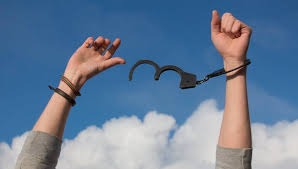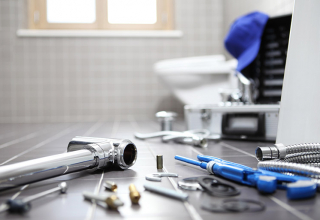
Every yard has that spot. The corner that got away from you, the area behind the shed where saplings started growing three years ago and now they’re taller than the fence, or the section along the property line that turned into a wall of brambles and volunteers. Clearing overgrown areas sounds like the kind of job that requires a professional crew with heavy equipment, but most brush clearing is actually manageable for regular homeowners with the right approach and tools.
The key is knowing what you’re dealing with and having realistic expectations about the work involved. This isn’t a one-afternoon project if the area is seriously overgrown, but it’s also not as overwhelming as it looks from the outside.
Table of Contents
Figuring Out What Needs to Go
Before touching any tools, walk through the overgrown area and actually look at what’s there. Not all plants are created equal when it comes to removal difficulty. Small saplings under two inches in diameter are relatively easy to deal with. Mature trees with trunks thicker than your arm are a different story and might actually need professional help.
Brush typically includes a mix of volunteer trees (the ones that sprouted on their own), aggressive shrubs, vines, and dense weeds. The volunteer trees are usually the biggest concern because they keep growing and their roots get more established every season. What starts as a pencil-thin sapling one year becomes a legitimate tree problem two years later.
Vines deserve special mention because they’re deceptively difficult. Something like wild grape or Virginia creeper doesn’t look threatening until you try to remove it and realize it’s woven through everything and the roots go down forever. These often require multiple attempts to fully eliminate.
The Tools That Actually Make a Difference
Hand tools work fine for light brush, but once you’re dealing with anything woody, power tools save enormous amounts of time and energy. A string trimmer can knock down tall weeds and grass, but it struggles with anything that has actual branches.
For small trees and thick brush, having a saw that can handle branches up to four or five inches makes the job exponentially easier. A cordless chainsaw works well for homeowners tackling these kinds of clearing projects since it’s lighter and easier to manage than gas-powered versions, especially when working in tight spaces or awkward positions.
Loppers and hand pruners have their place for precision work and smaller stuff, but they get exhausting fast when you’re clearing any significant area. Trying to hand-cut your way through an overgrown corner is a recipe for blisters and frustration.
Don’t forget basic safety gear. Long sleeves, heavy gloves, eye protection, and sturdy boots aren’t optional. Brush clearing means dealing with thorns, poison ivy, sharp branches, and all kinds of things that can scratch, poke, or irritate skin. The first time a cut branch whips back unexpectedly makes the value of safety glasses crystal clear.
Starting the Actual Clearing Process
The temptation is to just wade in and start cutting everything down, but that creates chaos fast. A better approach is to work in sections and clear from the top down—literally. Start by cutting back the tallest growth first, then work your way down to the smaller stuff.
This method keeps you from having to fight through dense undergrowth while trying to reach higher branches. It also makes it easier to see what you’re doing as you go. Once the canopy is down, the lower brush is much more accessible.
Cut trees and large branches into manageable pieces as you go rather than trying to drag out whole sections. A six-foot branch is way easier to haul than a twenty-foot one. Most people underestimate how heavy even small trees are once they’re cut. Breaking everything down into three or four-foot sections makes the removal part much less miserable.
For small trees that are still flexible, cutting them close to the ground and then using the cut trunk as a handle to pull the root ball out sometimes works. This isn’t possible with everything, but when it works, it prevents regrowth better than just cutting at ground level.
Dealing With the Aftermath
Here’s what nobody mentions: clearing the brush is only half the job. Now there’s a massive pile of cut material that has to go somewhere. This is where projects stall out because people clear everything in a burst of motivation and then have a mountain of branches sitting in their yard for months.
Having a plan for disposal before starting makes everything smoother. Options include hauling it to a yard waste facility, renting a chipper if the volume is substantial, arranging for bulk pickup if the local waste service offers it, or burning it if local regulations allow and conditions are safe.
Chipping works well if there’s a lot of material since it reduces the volume dramatically and creates mulch in the process. But chipper rental isn’t cheap, so it only makes sense for larger clearing projects. For smaller jobs, just cutting everything into bundle-sized pieces and dealing with it through regular yard waste pickup is often the most practical approach.
Some people try leaving the brush piles for wildlife habitat, which sounds good in theory but often just creates an eyesore and a spot where new weeds and vines establish themselves. If going this route, at least move the pile to an out-of-the-way location where it won’t become a maintenance problem.
Preventing It From Coming Back
Clearing brush once is hard enough. Doing it again next year because everything grew back defeats the whole purpose. The problem is that just cutting things down doesn’t kill most plants. Trees resprout from the stump, vines come back from the root system, and aggressive shrubs treat cutting as a pruning that makes them bushier.
For trees and woody plants, cutting them and then treating the fresh-cut stump with herbicide prevents regrowth. This needs to happen within a few minutes of cutting while the stump is still actively pulling moisture. Wait too long and the treatment doesn’t work as well.
Some people avoid herbicides completely, which is fine, but understand that means either digging out roots manually or repeatedly cutting back regrowth until the plant finally exhausts its energy reserves. That second option takes years with some species.
Another prevention strategy is actually doing something with the cleared area once it’s open. Putting down mulch, planting desirable ground cover, or converting it to lawn makes it harder for brush to reestablish. Empty, cleared ground is just an invitation for pioneer species (the aggressive weeds and volunteer trees) to move right back in.
When to Actually Call Professionals
Most brush clearing falls within DIY capability, but there are situations where professional help makes sense. Trees leaning toward structures, anything involving power lines, unstable trees that could fall unpredictably, or clearing on steep slopes where footing is treacherous are all good reasons to hire out.
Volume matters too. Clearing a small corner of the yard is one thing. Clearing an acre of overgrown property is a different scale entirely and might warrant bringing in someone with professional equipment.
There’s no shame in getting help for parts of the job even if handling other parts independently. Maybe hire someone to take down the larger trees but handle the smaller brush and cleanup yourself. Or do the cutting but pay for debris removal. Breaking the project into pieces based on what’s manageable makes more sense than trying to prove something by doing absolutely everything solo.
The main thing is that most overgrown yard areas aren’t as impossible to deal with as they seem from a distance. They’re just work. Tedious, physical work that takes longer than expected, but work that regular people with basic tools can absolutely handle. The alternative is watching that corner get worse every year while wishing someone would deal with it, which helps nobody.















